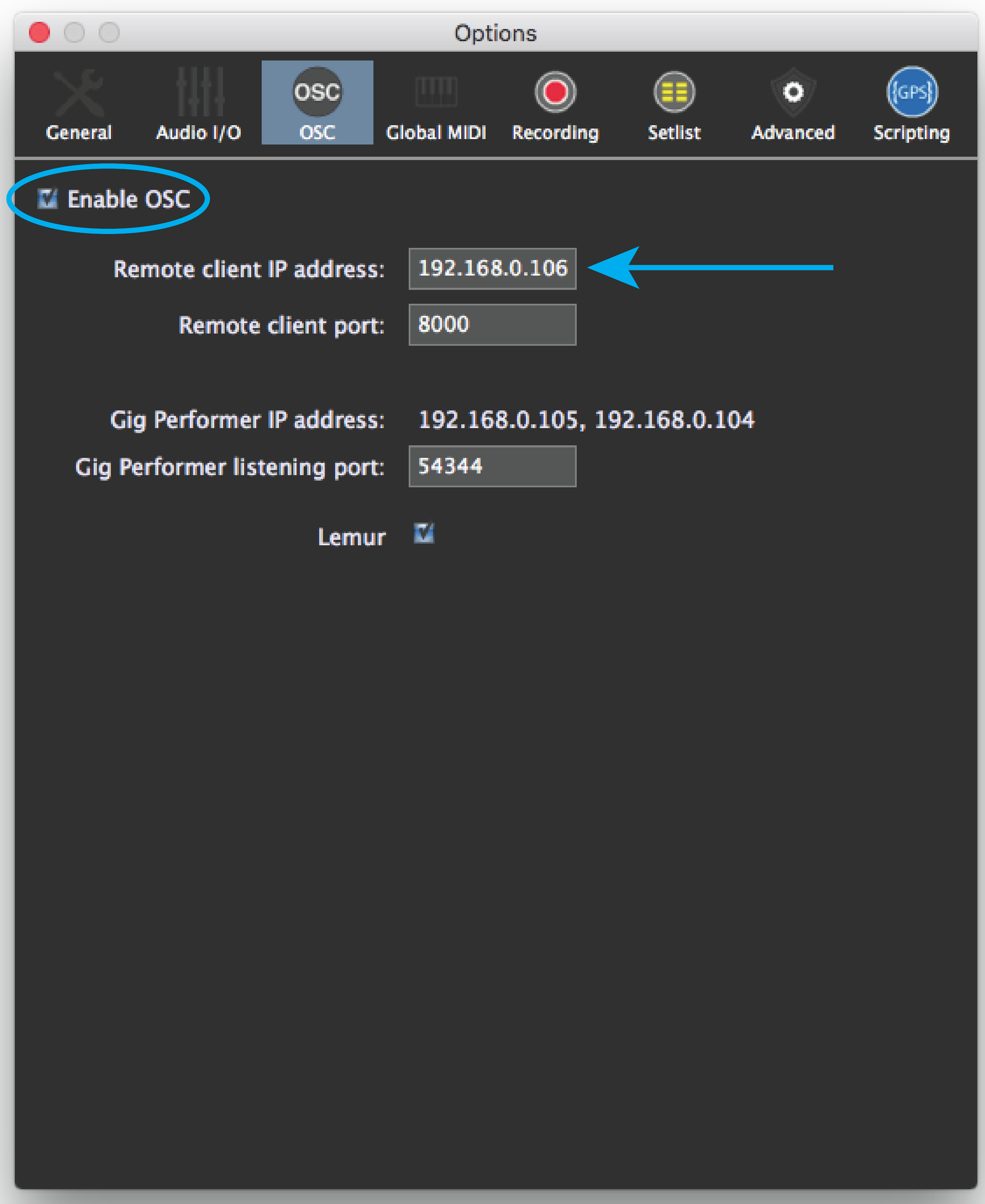As described in Appendix A of this user guide, OSC (Open Sound Control) is a communications protocol that allows you to view and move Gig Performer’s widgets and access songs and song parts wirelessly from your iOS or Android tablet or smartphone. This tutorial will show you how to use Gig Performer with an OSC app.
1.Establish wireless communications. For Gig Performer and an OSC app to work with one another, both your computer and the device running the app must be connected to the same wireless network, so ensure that they are communicating correctly.
2.Establish OSC communications. Launch Gig Performer and then go to The dialog window shown below will appear.

Click on the Enable OSC button (circled in the image) so that it is checked in blue. The IP address of the device running the OSC app is displayed in the Remote client IP address box (indicated by the arrow).
The port number of the OSC app is displayed in the Remote client port box. Note that the “Gig Performer IP address” value cannot be changed, as this is permanently set. If you’re using the OSC app Lemur or another OSC application that allows detailed control, check the “Lemur” box. If you’re using TouchOSC or any other app with a more basic OSC implementation, leave it unchecked.
Note: If you’re running an OSC app on multiple devices—say a tablet and a smartphone—and you want to use both devices onstage (or if you want to give one to your FoH engineer to have access to your controls), there’s a simple way to accomplish that, using something called Broadcast Mode. Assuming you’re using standard class C addressing (with IP numbers beginning with 192.168.1.x), simply replace the last value of the OSC app’s IP address with 255 (i.e., 192.168.1.255) and restart Gig Performer. Now all devices whose IP addresses are on the same LAN (i.e., those devices with IP addresses all starting with 192.168.x) and are listening on the OSC app’s port number will communicate simultaneously with Gig Performer. Click here to access our Knowledge Base article with more information.
1When done configuring options, close the dialog and quit Gig Performer.
2If you’re using Lemur or TouchOSC, download a Gig Performer template. For your convenience, we have created templates that make it easy to control Gig Performer widgets from the popular OSC apps Lemur and TouchOSC. If you are using either of these apps, click here to download the Lemur file, or click here to download the TouchOSC file. Note that these templates merely provide a starting point for your own OSC programming and you certainly are not required to use them—in fact, we encourage you to construct your own custom OSC environments.